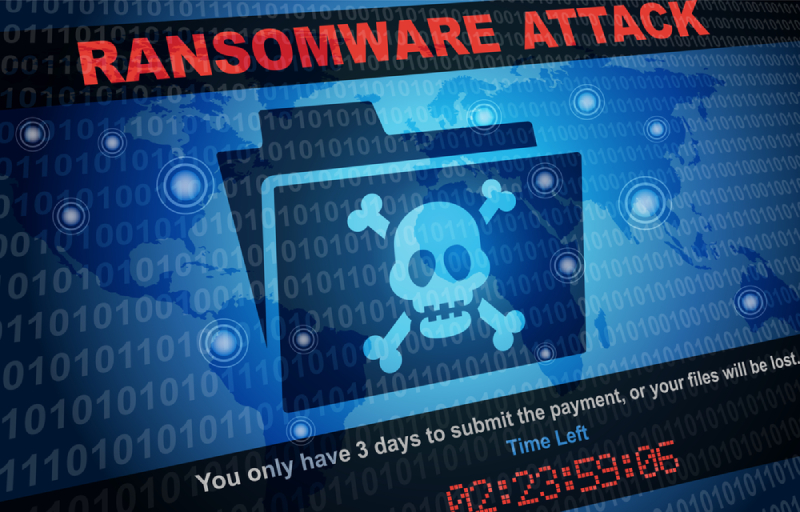No matter your line of work, your computer might be one of your most glaring vulnerabilities … and it’s one that too many East Coast business owners I’ve worked with don’t fully address.
Even if you work with your hands, and you’re a sole practitioner (a contractor, a landscaper, a mechanic, etc.) … the little computer in your HANDS might hold the keys to your business.
And whether you care to think about it or not, there are bad actors out there who want to break into it.
One of the ways they are increasingly doing this is a nasty little thing called ransomware.
So, as someone who cares deeply about YOUR business in its every dimension, I wanted to take a few minutes to give a rundown of known culprits and their recent attacks, as well as some ransomware defense steps, to help combat any possible breach of your Northeast business’s data.
(And yes, I’m keeping a sharp eye on the doings in Washington as it relates to this infrastructure bill … as of this writing, it has NOT yet been signed — but when it is, I’ll address what business owners need to know).
Ransomware Defense Steps to Protect Your East Coast Business’s Computer Systems
“You can never be too prepared.” -Regina King
Let’s hear it straight from the FBI: Ransomware is malicious software (“malware”) that blocks you from accessing your computer files, systems, or networks and demands you pay a ransom for their return.
You can download ransomware without even realizing it by opening an email attachment, clicking an ad, following a link or just visiting a website that’s embedded with malware.
You usually discover the attack when you can no longer access your data or you see computer messages demanding ransom.
Headline hacks
A recent report showed that in 2021, a ransomware attack against businesses will occur every 11 seconds. Cybercrooks carry out more than 4,000 ransomware attacks every day worldwide. The big targets are companies in legal, manufacturing, automotive, technology, and healthcare industries. (The first documented ransomware attack, in 1989, targeted the healthcare industry.)
Often the crooks don’t get the sky-high figures they demand, but on average organizations pay a ransom of nearly a quarter-million dollars. Ransoms are usually paid in virtual currency.
Earlier this year, Colonial Pipeline coughed up millions to cybercriminals who’d hacked the oil giant’s network and sent East Coast fuel supplies into a tailspin. And only last week, the global consulting firm Accenture was attacked by the LockBit ransomware gang.
A few cybercriminal gangs are behind many big attacks, such as the increasingly infamous REvil criminal gang of Russia (responsible for Colonial and for JBS Foods, which was attacked this summer and had to surrender an 8-digit ransom).
Another nasty bunch is Egregor, which has connections to Ukraine and has cyber-extorted Barnes and Noble, Kmart, and others, sometimes publishing customer data on the dark web.
Think you’re too small to get hit? About six weeks ago, a global chain reaction affecting thousands of businesses from pharmacies to grocery stores started with a back-door hacking of a common American software that all those businesses used. This shows that your business may be vulnerable in ways you don’t even realize.
Ransomware defense steps you can take
It could be only a matter of time before you and your Northeast business have to deal with this crime. And a ransomware attack can really hurt your business, costing you both dollars and customer confidence even if you don’t pay a ransom.
– Your best first ransomware defense is common sense. Download or open nothing you’re unsure of.
– Keep your operating systems, software, and apps strong and updated, and make sure your anti-virus and anti-malware defenses are set to automatically update and scan your systems regularly.
– Backing up data remains critical. Whether you use external media like thumb drives or back up in the cloud, double-check that those backups were completed.
(Note: If you do back up using a cloud solution, you may be worried about the tech company being hacked. That’s a legit concern, but agreements with these companies often include responsibility clauses in case of a cyberattack. Check your contract. Also, cloud companies often have firewalls and other security far superior to what your company might be able to afford.)
– Layout a plan for your company’s response to a cyberattack. Details here include who on your staff will be notified, as well as when and how; how to contact your insurance company and law enforcement; and prepared language to notify customers. (Most companies have used phrases citing their regret for the attack and that they moved quickly to address it.)
– If you speak to your insurance carrier about coverage for a ransomware attack, expect a lot of questions about your cybersecurity – and talk of higher premiums. The insurance industry is still pretty new to this particular risk.
It happened anyway – now what??
You come into work one morning and find your data locked and some foul-looking screen telling you to fork over a ton in Bitcoin if you ever want to see your business info again. Don’t panic, for starters.
- Unplug your computer and all network devices, including remote ones. Ransomware can spread fast.
- Call the cops. Reporting to authorities ASAP helps your investigation and, probably, your insurance coverage (if any).
- Try to purge the ransomware. Consult your IT specialists and your system vendor. There are solutions out there, and many work.
Don’t believe this cyber-danger will simply go away. If we can offer any help on protecting yourself, please let us know.
Besides providing some ransomware defense steps, here’s what we are EVEN better at helping you with: protecting your business from financial vulnerabilities. Whether that’s leaky books or a future tax-related disaster … we can spot problems coming from a mile away.
If that’s something you want in your corner, let’s chat about it:
(412) 856-8799
To your bottom line,
Buccigrossi and Associates
(412) 856-8799
Buccigrossi & Associates, LLC






